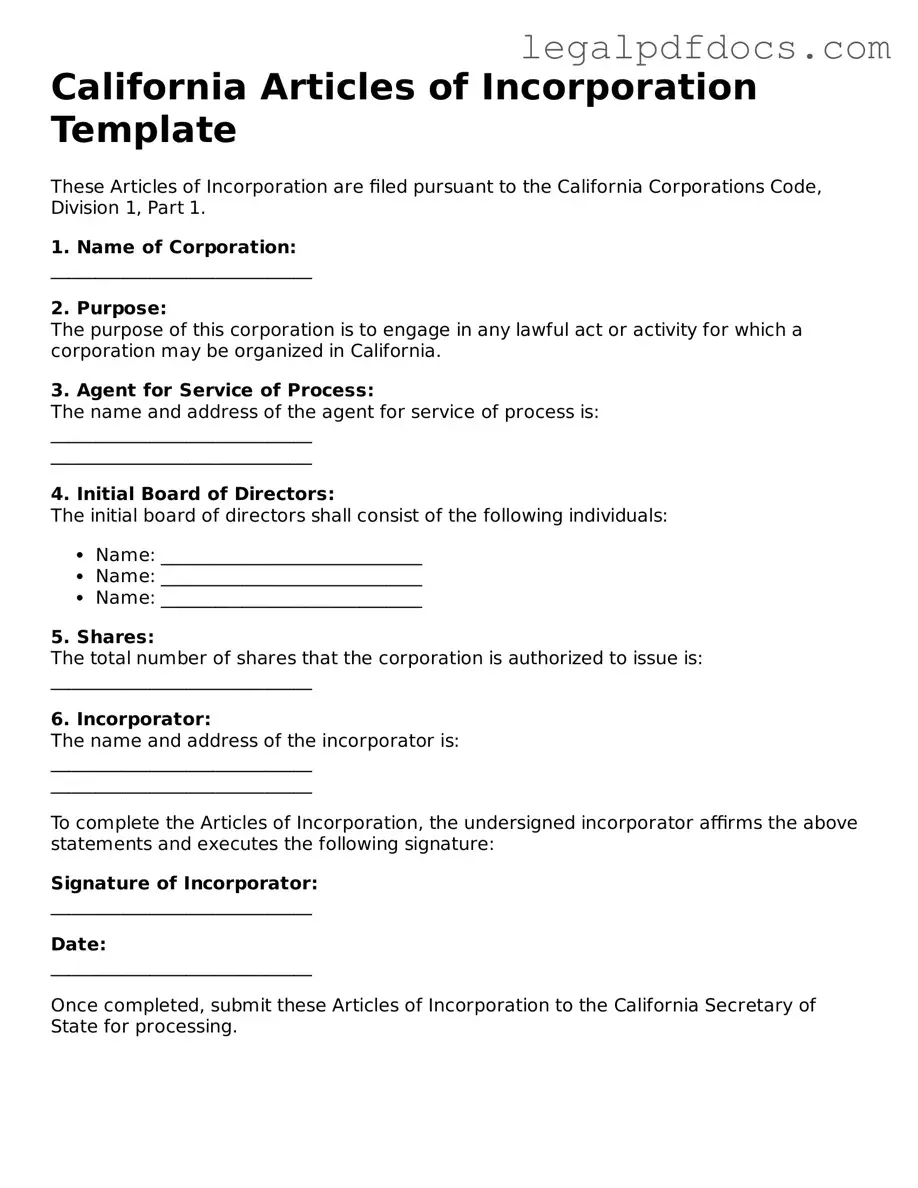Official Articles of Incorporation Form for California
The California Articles of Incorporation form is a legal document that establishes a corporation in the state of California. This form outlines essential details such as the corporation's name, purpose, and structure. Properly completing this form is crucial for anyone looking to start a business in California.
Ready to get started? Fill out the form by clicking the button below.
Open Articles of Incorporation Editor Here
